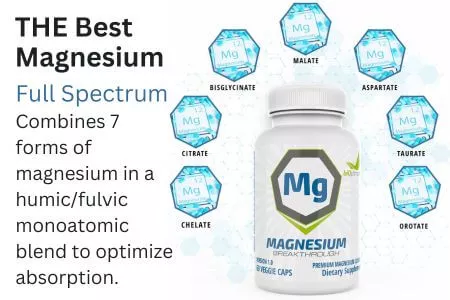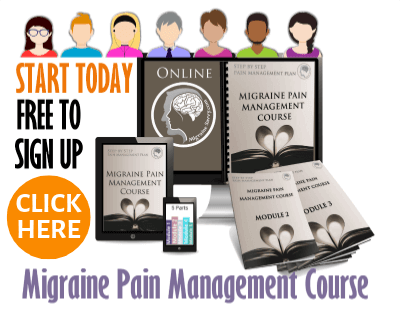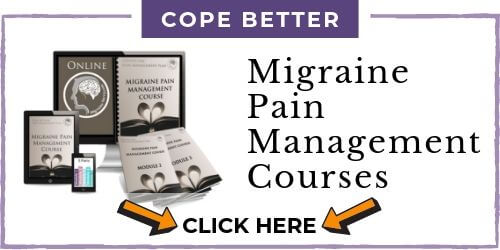- Home
- Prevention Tips
- Migraine Headache Prevention
COMPLETE MAGNESIUM SUPPORT
My Top Choice - Magnesium Breakthrough - The ONLY supplement with all 7 essential magnesium types in one formula. Most only have 1-2 types, leaving you deficient.
Migraine Headache Prevention: When To Use Prophylactic Medications

You need to know when to consider taking daily migraine headache prevention? According to the Mayo Clinic’s website only 1 in 10 migraine sufferers take prophylactics, which I find quite alarming. So much needless pain and suffering.
My #1 Choice in Magnesium Supplements
The statistics also show that only half of us are getting correctly diagnosed.
The Mayo Clinic also states that half of those of us who get migraines could benefit from taking preventative medications.
I don't mean to bog you down with statistics, but I want to point out that you may not be getting the help you need. And that the help could be available to you right now.
Having the right pain management strategy can drastically improve your life.
You Are A Candidate for Migraine Prevention Therapy If...
You may be considered a candidate for migraine headache prevention therapy if you have:
1. Two or more debilitating attacks a month,
2. Pain-relieving medications that aren't helping,
3. Poor or no response to acute drug treatment and your attacks continue, or
4. Migraine signs and symptoms include a prolonged aura or numbness and weakness.
5. A history of long-term, frequent, or excessive use of pain medications (analgesics) or acute medications that make your headaches worse or that have led to reduced responsiveness to other drug therapies.
My #1 Choice in Magnesium Supplements
The Goal of Migraine Headache Prevention Medications
The goal of preventive medications is to reduce the "frequency, severity and length of migraines and may increase the effectiveness of symptom-relieving medicines used during migraine attacks."
The American Migraine Foundation (AMF) says the "ultimate goals" of migraine prevention therapy are to:
1. Reduce frequency, severity, and duration of attacks;
2. Improve responsiveness to treatment of acute attacks;
3. Reduce level of disability;
4. Maintain cost of care for migraine treatments;
5. Reduce excessive or overuse of acute medications.
The Mayo Clinic also says that "in most cases, preventive medications don't eliminate headaches completely and some cause serious side effects." The AMF also says it's rare that preventive therapy completely eliminates migraine headaches.
If you find the right meds, and have had good results by remaining migraine-free for six months to a year, your doctor may recommend changes in the treatment plan to see if the migraines return. However, you may still need to find abortive medication that works safely with your preventive for acute attacks.
That's right - you will still need to take an abortive to stop an attack should the preventive not stop them sufficiently.
You may have to take both a preventive and an abortive to effectively manage your acute migraine attacks.
Prophylactics Have to Be Taken Every Day
Prophylactics have to be taken every day to help prevent migraine attacks from occurring.
They are found to be most useful for people who have chronic, frequent, severe migraines or who also have other co-existing medical conditions that prevent them from taking any of the acute migraine medicines. They are not intended to be used to treat an acute attack.
Common drug classes for migraine prevention are: Beta blockers, calcium channel blockers, tricyclic antidepressants, and anticonvulsants.
It is important that preventive therapy be individualized and take into account the medications efficacy, potential adverse effects, the patient’s co-existing medical conditions and in most cases the associated drug costs.
Choosing preventative therapy can be a very complex process if you are taking other medications.
My #1 Choice in Magnesium Supplements
Other Ways to Prevent Migraine Headaches
Here are some natural ways to help you proactively prevent your migraine attacks:
- Vitamins and supplements help minimize the causes of migraines and provide between migraine support. Migra-Eeze is great for aborting attacks for some of us too.
- Use ice packs for quick relief, because ice works best for reducing migraine pain.
- Biofeedback training is proven to help migraine pain and reduce future attacks.
- Regular acupuncture treatments.
More To Read
MIGRAINE PREVENTION Related Articles
WANT MORE TIPS? Subscribe to my newsletter and follow along on Facebook and Pinterest for all of the latest updates.
How to be more MIGRAINE SAVVY right now...
Migraine Headache Prevention References:
1. Adelman J.U. and Adelman R.D. (2001) Current options for the prevention and treatment of migraine. Clinical Therapeutics 23(6) pp. 772-88, cited on U.S. National Library of Medicine – National Institutes of Health (NIH). Available at: http://www.ncbi.nlm.nih.gov/pubmed/11440281 Accessed June 21, 2016.
2. American Migraine Foundation (AMF) Preventive Treatments. Available at: http://www.achenet.org/education/patients/PreventiveTreatments.asp Accessed Aug 8, 2016.
3. MayoClinic.com Migraine (updated June 17, 2016): Treatment and Drugs. Available at: http://www.mayoclinic.org/diseases-conditions/migraine-headache/home/ovc-20202432 Accessed June 21, 2016, Updated Mar. 9, 2019.

















